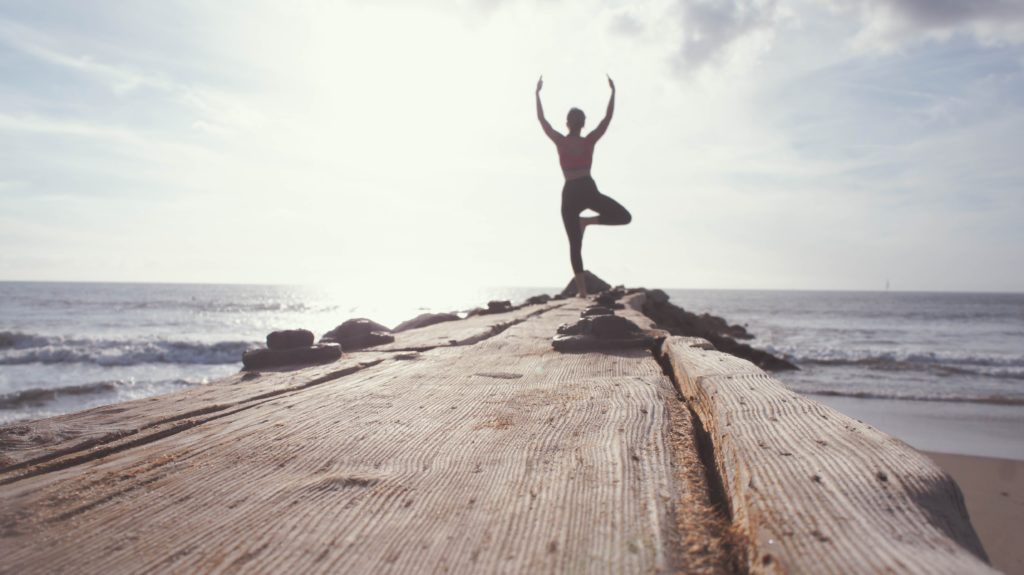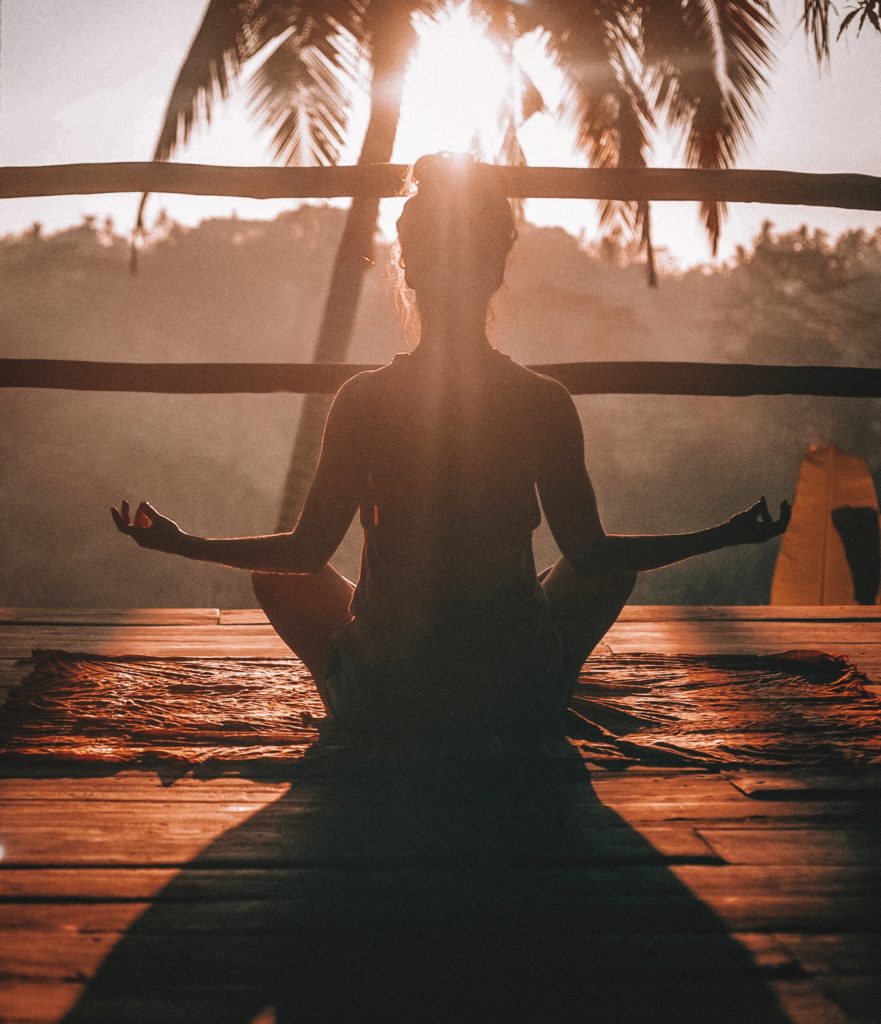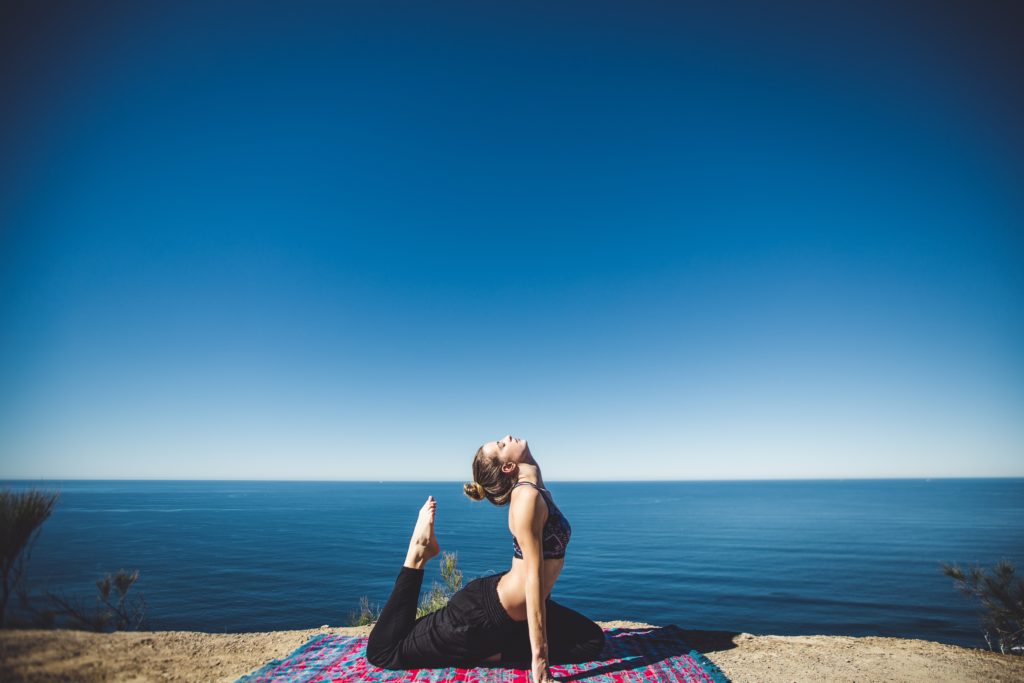Yoga for Irritable Bowel Syndrome
5 Poses to Help Relieve Diarrhea and Constipation
When it comes to managing IBS, food is often the main target, but did you know yoga for Irritable Bowel Syndrome can also be a big help? Yoga has been a popular and buzzing trend for a while now. Your aunt is totally into meditation, the neighbour down the street goes to hot yoga every day, and that girl at work wants to quit her day job and open her own yoga studio. So, what’s all the talk about? And is it really that amazing like all the yoga gurus claim it is? As a matter of fact, yoga is a very beneficial practice and may actually help to alleviate your IBS symptoms.
What is Yoga?
Yoga is a mental and physical practice that originated in ancient India over 5,000 years ago. It has been practiced by many people all over the world for its ability to connect the mind to the body, relax, meditate, and strengthen the body. What a coincidence it is that these are all important things when it comes to managing IBS symptoms, mindfulness and connecting to what your body needs is a great step to treating your IBS symptoms. Yoga can be practiced in many different ways and can look like many different things.
There are a few main types of yoga like hatha, vinyasa, ashtanga, bikram, and more. Did you just think I was speaking a different language? Well, as a matter of fact, yoga’s origins come from a different language called Sanskrit. The names I mentioned above mean classic breathing, rhythmic flow, physically demanding, and hot yoga, respectively.
If you’re new to yoga, don’t let the lingo scare you off! Yoga for Irritable Bowel Syndrome doesn’t have to be complicated. Yoga can be flowing through sequences of poses quickly for an invigorating exercise, and yoga can also be relaxing into the same pose for 20 or more minutes to get a deep restorative stretch. Heck, yoga can even be laying down in the middle of your floor and just breathing for as long as you like! All of these practices are shown to be beneficial to your health. Plus, yoga can be practiced by anybody and everybody.
Yoga for Irritable Bowel Syndrome: How does it help?
There is some research to suggest that yoga for Irritable Bowel Syndrome may be part of an effective treatment for IBS. The Journal of Alimentary Pharmacology & Therapeutics published a study looking at yoga vs. a low FODMAP diet (http://onlinelibrary.wiley.com/doi/10.1111/apt.14400/full) in those with IBS. They found that yoga has comparable effects to the low FODMAP diet, and that those with IBS could benefit from yoga in addition to a low FODMAP diet. This study also showed that yoga improved levels of anxiety, body awareness, and body responsiveness.
One of the biggest benefits of yoga for Irritable Bowel Syndrome is its ability to decrease stress and promote a sense of calmness. As you relax into the deep breathing of each pose, it calms your nervous system which helps to calm your digestive system. Yoga for Irritable Bowel Syndrome allows you to release any tension that you may be holding within your body. It also helps you become more mindful to allow you to better cope with stressful situations and unexpected traumas in your life. As you may know, stress and anxiety are common triggers for people with IBS. Large amounts of stress, which many people in today’s world struggle to manage, can make IBS symptoms worse and harder to deal with. Yoga for Irritable Bowel Syndrome can be a great way to manage stress and help decrease your symptom severity.
Another benefit of yoga that could be particularly great for those with IBS is that it gives you a higher sense of awareness of yourself and your body. It allows you to connect with yourself so that you are able to put what you need first. This body- and self-awareness can give you insight into what is healing and what is harming for your own body. This could be a great way to help yourself identify your triggers and get on track to a symptom free life!
Wondering what else affects symptoms of IBS like gas, bloating, abdominal pain, diarrhea or constipation? You’ve got to understand more about the FODMAPs, poorly digested sugars that are the most common triggers in digestive issues. Download my free eBook – Click here to get a copy emailed to you right away.
Yoga also gives a “massage” to your muscles and organs. Breathing deep into poses, especially any poses that give a twisting motion, stimulates the muscles and organs within the digestive tract. These twisting motions may help get things moving along more regularly, so be gentle with twisting motions if you struggle with the diarrhea subtype of IBS.
How to Customize Yoga for Irritable Bowel Syndrome
There are a few different subtypes of IBS depending on whether you most often struggle with diarrhea or constipation. Depending on which subtype you have, there are a few ways you can customize your yoga practice to make it a more enjoyable and beneficial experience.
IBS-D is the form of IBS in which your digestive tract can be overactive causing diarrhea. IBS-C on the other hand occurs when contractions within your digestive tract are slowed which leads to constipation. There are certain poses that could be better for each type of IBS.
Yoga for Diarrhea
For those with IBS-D, it may be beneficial to avoid twisting at first, as these can stimulate the digestive tract if you are experiencing a flare up. However, it may be beneficial to add these into your practice later on once your body gets comfortable with yoga and you know what triggers you.
Yoga for Constipation
Those with IBS-C seem to have fewer restrictions when it comes to yoga poses. There doesn’t seem to be any poses that are going to worsen constipation symptoms, so you have lots of options. Some poses that may be beneficial are those that allow you to breathe deeply into your belly.
Getting Started with Yoga for Irritable Bowel Syndrome
For anyone with digestive symptoms that is going to practice yoga for Irritable Bowel Syndrome, it is very important to take it at your own pace. Take your time getting into poses, and never push your body to the point where you feel like you are straining or you are in pain. Moving with your breath is the underlying philosophy of yoga, which allows you to work at the poses the way your body needs.
With all the great benefits of yoga for Irritable Bowel Syndrome, I think it’s time we find your inner yogi and get you started on your way to finding some symptom relief! Remember to have fun with it and keep breathing!
Top 5 Yoga Poses for IBS
Wind-relieving pose
Yup, that’s the actual name of an actual yoga pose! Also called pawanmuktasana in Sanskrit, the wind-relieving pose allows the intestines and other abdominal organs to be massaged. This can aid in digestion, relieve bloating, and you guessed it, help you pass gas! Might be best to keep this one for your at-home yoga practice so you’re less afraid of really getting into the pose and maybe letting a little gas out. It is called wind-relieving pose for a reason 😉
How to do wind-relieving pose:
- Lay down on your back, with both legs extended.
- Exhale and bring both knees into your chest and give then a nice hug.
- Keep your right knee hugged in while releasing your left leg out straight to the floor. Hold here and breathe for about 1 minute.
- Bring your left knee back in to meet your right and give both legs a gentle hug.
- Keep your left knee hugged in while releasing your right leg out straight to the floor. Hold here and breathe for about 1 minute.
- Bring your right knee back in to meet your left and give both legs a gentle hug.
- Exhale and release both legs to the floor.
Downward facing dog
A classic yoga pose, also known as adho mukha svanasana. Downward facing dog lengthens the spine and tones the abdominal muscles, improving digestion. This pose can help to improve blood circulation to the brain and body. It also calms the mind and gives a boost of energy.
How to do downward facing dog:
- Start on your hands and knees with your toes tucked. You want your body lined up so that your wrists are directly underneath your shoulder and your knees are directly underneath your hips.
- Keep your fingers spread wide to help distribute your weight evenly.
- Exhale and lift your hips up towards the ceiling.
- Gently straighten your legs, but do not lock your knees.
- Press into your hands while drawing your chest back towards your thighs.
- Keep your ears aligned with your upper arms, your gaze should be looking between your legs.
- Hold here while breathing for 1 to 3 minutes.
- To release out of this pose, bend your knees and come back to your hands and knees.
Cobra
Bhujangasana, or cobra pose, can be used in a flow prior to downward dog, or just on its own. Cobra tones and stretches the abdomen. It is thought that this pose improves circulation, stimulates the organs, and combats stress and fatigue.
How to do cobra:
- Start by lying face down on your stomach, with the tops of your feet on the floor and legs a few inches apart.
- Place your hands beside your chest, under your shoulders and keep your elbows hugged into your body.
- Press the tops of the feet, thighs, and pubic bone into the floor.
- Inhale while you gently raise your head and chest off the floor, keeping your gaze on the floor just in front of you. For beginners, you can just stay at this point called “baby cobra.”
- To go deeper into the pose, straighten the arms and lift the chest off the floor, while pressing into the tops of the feet and thighs. Be careful not to place any strain on the lower back.
- Hold the pose from 15 to 30 seconds while breathing easily.
- Exhale and lower to the floor.
Half Lord of the Fishes
This pose is also known more simply as seated half spinal twist, or ardha matsyendra in Sanskrit. This is a twist that those with IBS-D may need to be cautious of. It can help to relieve constipation and indigestion. It is said that twisting yoga poses help to “detoxify” the body, although there is no scientific proof of this yet.
How to do seated half spinal twist:
- Sit in an upright position with both legs straight out in front of you.
- Bend the right leg and place the right foot on the outside of the left knee.
- Keeping the left leg on the floor, bend the left leg in so that the left foot is near the buttocks.
- Place the right hand on the floor behind your bum.
- Inhale the left arm up, and place on the upper arm on the outside of your right thigh.
- Exhale and gently twist, remembering to keep a tall spine while your gaze is over your right shoulder.
- Breathe here for 30 seconds to 1 minute.
- Release with an exhale, return to starting seated position and repeat on the left side.
Happy baby
Also known as ananda balasana, the happy baby pose is a pose that makes you actually feel like a happy baby. It may feel a little funny to do at first, but has great benefits. This pose gives a sense of calmness, and is good for relieving stress and tension while massaging the stomach and internal organs.
How to do happy baby:
- Start laying flat on your back.
- Bring your knees into your belly.
- Grasp the outside of your feet with your hands.
- Open your knees up slightly wider than your torso and bring them in the direction of your armpits
- Keep the ankles directly over the knees while keeping your feel flexed.
- Relax here and breath. You can also rock side to side if that’s what feels good to you.
- To release, let go of the feet, bringing the knees back into the chest, give your knees a gentle hug and release your legs long to the floor.
So, there’s a little insight into the benefits of yoga for Irritable Bowel Syndrome and how to do it! I really hope I’ve inspired you to even try one of the poses above or to incorporate some yoga into your life. Yoga allows you to destress, relax, connect the mind to the body and hopefully make your digestive system a little bit happier! It’s easily done at home, but always remember to take things at your own pace and BREATHE!
If you need any more help identifying your triggers, I’d love to help you out in the CLAIRITY program.
Until next time, Namaste (the divine in me bows to the divine in you).
Wishing you much love & wellness,
Stephanie





